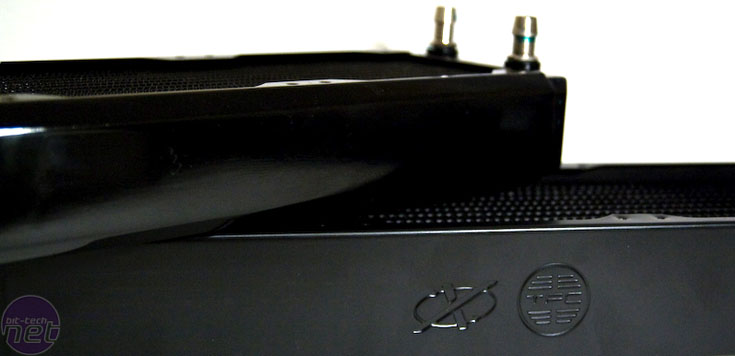Introduction
Here at bit-tech, we're enthusiasts through and through. Tim's a graphics guru, Rich is a motherboard expert, Joe is such an avid gamer that we don't know how he holds onto a relationship, and I...well, I'm a cooling geek and modder.Because of that, it was my promise to Tim a year ago that I would bring some real watercooling back to the forefront. And with the help of the many great companies I've been involved with in the pursuit of getting our modders some of the top kit in the world, I've been able to do just that.
After our Watercooling Fluid Shootout ran the first no-nonsense test of non-conductive fluids, I was given a new challenge by the community - the radiator.
For as much dedication as waterblocks have been given throughout the years, the radiator has sat as kind of an ugly sister - a necessary part of the family, but hardly glamorous or sexy. We go on to test flow patterns and temperatures on all the latest blocks, barely bothering to note the big black thing that actually removes the heat.
Fortunately, the Feser Company, the crazy German company behind Feser One cooling fluid and the colourful Feser Tube, have given me a good reason to take a look at radiators in general with the release of it's new TFC XChanger radiator.
Rather than just test the TFC XChanger, some of the best of the best in watercooling wanted a more complete look at the radiator market in general. So, the guys at Danger Den, Frozen CPU, Aqua-PCs, and Performance-PCs got their lists together for what will become a recurring feature for bit-tech - the radiator shoot-out.
This first round will feature one of the best known brands - the HW Labs Black Ice GTX series, as well as the new TFC XChanger. But if you are wondering about seeing some more brands or more sizes, don't fear - you can add your requests to the comments in our forums and I'll try to squeeze them in over the next round. We've already got ThermoChill and Swiftech on our maps for the next round up.

Our radiator testing - demystified
I'm only going to cover this once in such detail as I am today - in future tests, you will find a note referencing back to this and a brief summary.Everywhere that I've looked on the web for radiator reviews, there's one of two scenarios. Either you have a bunch of yapping about what the radiator looks like, or a bunch of graphs, charts and illustrations detailing everything from pressure drop to air flow rates to the environmental impact on chimpanzees in Zimbabwe. Okay, maybe that last part's a bit of an exaggeration, but still.
I can understand the idea of an enthusiast wanting to know what these things are - but most can be found on the data sheets of the better end brands. And the truth is, knowing all of that information still leaves us guessing as to which radiator really matches our needs. In light of that, I've come down to a very "no-nonsense" approach. CW, Flow, and air rates are great - and they can be had from a variety of places. But what nobody seems to want to answer is, "What kinds of differences to system temps are we talking?"
Over the next few pages, you're going to see a "less is more" approach that I feel much better models the information that we need as a buying decision. As much as I love the technology behind radiators (and there will be an upcoming article on the theories behind this, much like the one for waterblocks), none of that translates into an isolated "this is the difference" report.
To that effect, the graphs you'll be seeing in our results focus around one thing - the change from ambient to idle and idle to load over the CPU. I've chosen this because it's an accurate temperature, and a properly mounted waterblock can move as much heat as the liquid running through it can absorb.
More importantly, if you're looking to overclock (which many enthusiasts do), then this is probably the only temperature that really matters in the entire system. All the theory in the world is great, but if it doesn't amount to a lower CPU temperature then it may as well be Jello running through the hoses. At least then you'll have a snack!

MSI MPG Velox 100R Chassis Review
October 14 2021 | 15:04









Want to comment? Please log in.